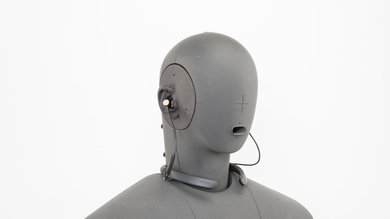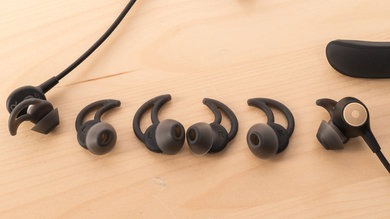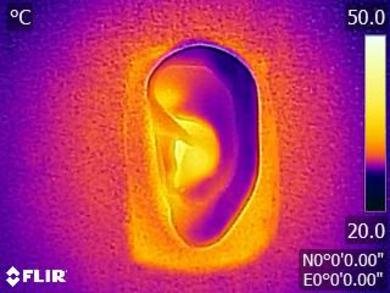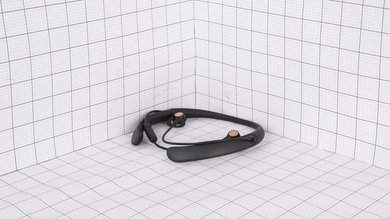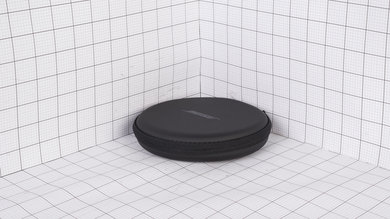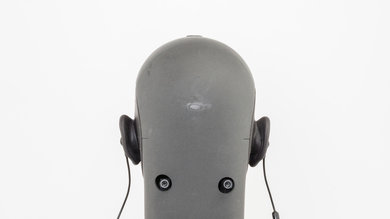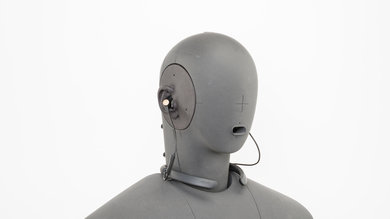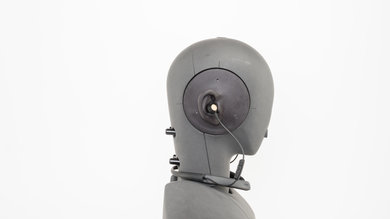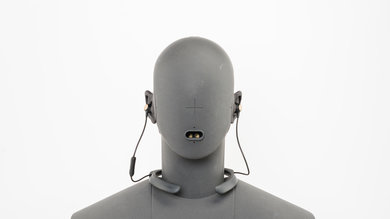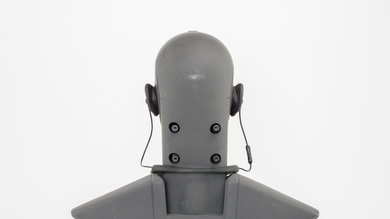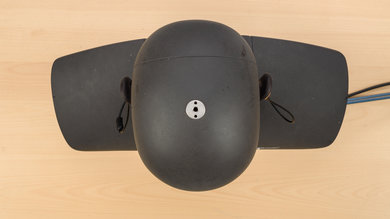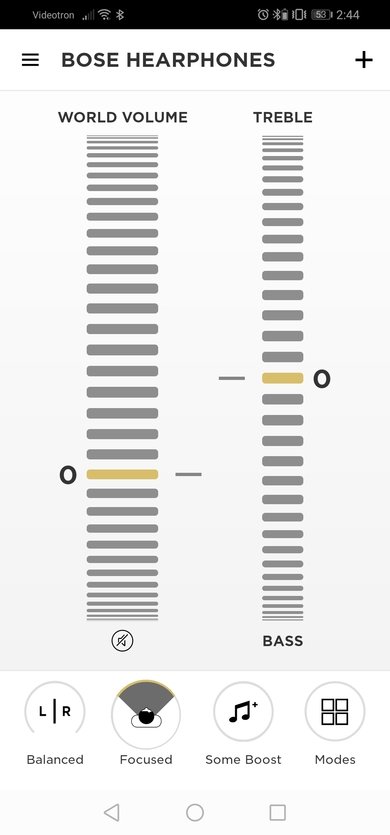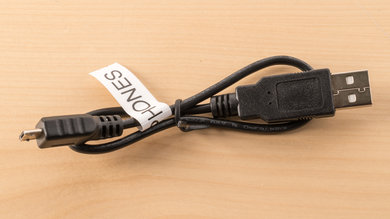The Bose Hearphones Wireless are unique earbuds that have a conversation-enhancing feature. They're designed to help you hear better by amplifying ambient noise. They have a decent ANC feature that blocks out ambient noise and are quite comfortable to wear for a while. Unfortunately, they have a bass-heavy sound profile, which some users may not enjoy, and lack an EQ. We couldn’t accurately test their conversation-enhancing feature on our test bench, so we tested these as normal Bluetooth headphones, but we think they do a pretty good job at enhancing ambient noise. However, the earbuds emit very loud and piercing feedback sometimes, which is painful.
Our Verdict
The Bose Hearphones are satisfactory for mixed usage. These conversation-enhancing headphones don’t have the best audio quality and won’t be great for critical listening. On the upside, they have a pretty good ANC feature suitable for commuting and at the office as they block out the deep rumbles of a bus engine and ambient chatter. Their portable, breathable, and stable design is good for sports as well. Unfortunately, like most Bluetooth headphones, their latency might be slightly too high to be used for watching video content and gaming.
- Unique conversation-enhancing feature.
- Good isolation performance.
- Comfortable design.
- Sub-par audio quality.
- Neckband design might not be for everyone.
The Bose Hearphones are passable for neutral sound. These headphones have a very overemphasized bass that sounds thumpy and boomy. Also, they can’t seem to be able to reproduce frequencies over 10kHz, which is disappointing. Like most Bose headphones, they can’t be EQ’ed to your preference. These headphones' primary use is for conversation enhancing and not neutral sound.
The Bose Hearphones are good for commuting. The Bose Hearphones have a pretty good ANC feature that blocks out a good amount of low-end noises like the rumbles of a plane or bus engine. They're easy to carry around and are quite comfortable for long rides or flights. Their eight hours of battery life should be more than enough for a daily commute, too.
The Bose Hearphones are good for sports. Their earbud tips with a stability fin design are stable for sports, and you should be able to run with these without a problem. They're very breathable and are easy to carry around your neck as well. However, not everyone will like working out with a neckband design, and like the Bose QuietControl 30/QC30 Wireless, their rubber coating may peel off after exposure to sweat.
The Bose Hearphones are decent for the office. Their ANC feature blocks a good amount of work environment noises. They do a decent job at isolating against ambient chatter and sharp noises like A/C systems. Unfortunately, the 8-hour battery life might be a bit short for some. On the upside, their conversation-enhancing feature might be useful if you need to hear better when in a meeting. Overall, these won’t be the best option to enjoy your favorite tracks at the office.
The Bose Hearphones are sub-par for gaming. On top of having very high latency for gaming, these headphones have a mediocre microphone for gaming and won’t compete against gaming headsets’ boom microphones. You shouldn't use them for this.
Changelog
- Updated Mar 24, 2020: Converted to Test Bench 1.4.
- Updated Nov 21, 2019: Converted to Test Bench 1.3.1.
- Updated Nov 21, 2019: Converted to Test Bench 1.3.
- Updated Jun 18, 2019: Review published.
Check Price
Popular Headphones Comparisons
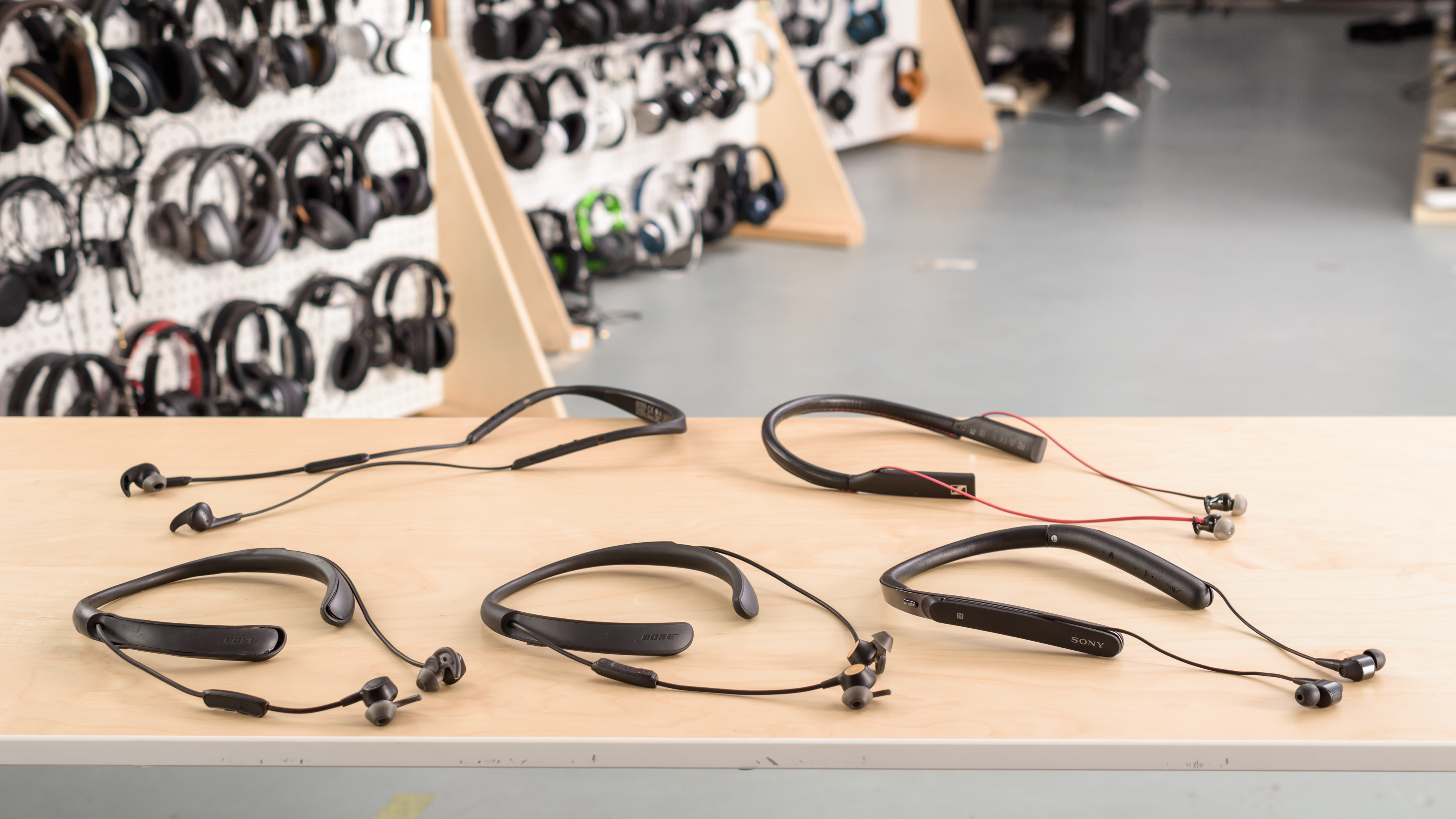
The Bose Hearphones are rather unique Bluetooth headphones that are intended to be mainly used as a conversation-enhancing device. They can also be used for music, but their sound profile is very bass-heavy. They're quite similarly designed to the Bose QuietControl 30/QC30 Wireless.
See our recommendations for the best neckband headphones and the best noise cancelling earbuds.
The Sennheiser Momentum In-Ear/HD1 In-Ear Wireless are a better option over the Bose Hearphones Wireless if you're looking to listen to audio content like music or podcasts. Their companion app offers a parametric EQ and presets so you can customize their sound to your liking. However, the Sennheiser don’t have an ANC feature like the Bose, and they also don’t offer a nice conversation-enhancer mode that amplifies ambient noise. The Bose are also more comfortable and have a better wireless range.
The Jabra Elite 65e Wireless are better headphones than the Bose Hearphones Wireless. The Jabra are very well-built, have a more neutral sound profile, which some users may prefer, and have better noise isolation performance. However, no headphones have a similar ambient noise enhancer mode like the Bose. If you need a pair of headphones to help you hear better, the Bose are a better option, thanks to their amazing talk-through.
The Bose QuietControl 30/QC30 Wireless are better Bluetooth headphones than the Bose Hearphones Wireless thanks to their more neutral sound profile, which some users may prefer, but if the enhanced-conversation mode is what you’re looking for, then consider the Hearphones. On the other hand, the QC 30 has slightly better noise isolation performance, but design-wise, the QC 30 and the Hearphones are practically identical.
The Sony WI-1000X Wireless are better headphones than the Bose Hearphones Wireless when it comes to listening to audio content. The Sony have a more neutral sound profile, which some users may prefer, and they also feel better-built. Their noise isolation performance is also better, but they don’t have the nice conversation-enhancer feature of the Bose.
Test Results

The Bose Hearphones are simple-looking around-the-neck headphones and are practically identical to the Bose QuietControl 30/QC30 Wireless. They look high-end thanks to the materials used but don’t stand out due to their all-black design, which is good since they're designed to be used in everyday social situations. They have an earbud design that slightly protrudes out of the ears, and the buds have a golden accent to make them look slightly more premium.
Like the Bose QuietControl 30/QC30 Wireless and the Bose SoundSport Wireless, the Bose Hearphones have the StayHear+ earbud tips that are very comfortable. You can wear the Hearphones for a few hours without feeling any ear fatigue or soreness. They fit nicely inside the ear without going deeply into the ear canal. Some may not like the feel of having a neckband constantly resting around your neck, especially since it's fairly bulky and not as malleable as others like the Jabra Elite 45e Wireless or the Sony WI-C600N Wireless. On the upside, the buds are lightweight enough that you shouldn't really feel them in your ears.
The Bose Hearphones have good controls and offer common functionalities. On the in-line remote, you have your play/pause button that you can use to manage calls, too, and you also have volume controls. You can also double-tap the middle button to skip tracks but can’t rewind or go to the previous one. On the side of the remote, you can find the ANC/talk-through level buttons. Raising this will reduce the ANC and help you hear better by amplifying ambient noise. To trigger your device’s voice assistant, hold the middle button of the in-line remote.
Like most in-ears and earbuds, the Bose Hearphones are very breathable. You shouldn’t feel a big temperature difference when wearing these for a long time. Thanks to the airflow, you shouldn’t sweat more than usual during your workouts since no heat is being trapped. This makes them a good option for sports.
These headphones don’t take up too much space, as the total surface area they occupy is relatively small. However, due to their somewhat odd shape and since their neckband isn’t very malleable, they won't fit into all pockets but should easily fit into most bags. They're also easy to carry around if you just let them dangle from your neck. They do come with a case, which makes their design a bit bulkier, but it protects your headphones when you’re on the move.
The Bose Hearphones come with a nice hard case that protects the headphones well against scratches, water exposure, and physical damage from falls. The case takes more space than the headphones, but it's fairly thin and isn’t too bulky. This should easily fit in a bag or luggage.
The Bose Hearphones seem to be built the same way as the Bose QuietControl 30/QC30 Wireless. While we initially felt like the QC30 were well-built, multiple units, including our own, seem to have issues in the long term as the rubber coating surrounding the neckband peels off with time. We expect the Hearphones to have the same issue. On the upside, the headphones are dense enough not to break from falls, and the whole build is protected by rubber. The cables are thick but could snap off if they're pulled too forcefully.
Thanks to their stability fins and lightweight design, the Bose Hearphones have a stable and secure fit in your ears. They don’t move around too much with head movement and don’t pop out during exercising. This should be fine for jogging, but might not be as stable as an ear-hook sports design like the Anker Soundcore Spirit X Wireless or the Beats Powerbeats3 Wireless.
They have excellent frequency response consistency. Assuming the user can achieve a proper fit and an air-tight seal using the assortment of tips that come with the headphones, then they should be able to get consistent bass and treble delivery every time they use the headphones.
The Bose Hearphones' bass accuracy is sub-par. The range is overemphasized across the range, which adds intense thump, rumble, punch, and boom to your mixes. However, this can also sound muddy.
The Bose Hearphones' mid accuracy is good. The response is fairly even, but there’s the overemphasis in low-mid is the continuation of the high-bass bump, which makes vocals sound thick and cluttered. The mid-mid is fairly neutral, so vocals and lead instruments are present in your mixes. A bump in the high-mid can make vocals and lead instruments sound a bit harsh.
The Bose Hearphones' treble accuracy is good. The low-treble is slightly overemphasized, so vocals and lead instruments are bright. Sibilants like S and T sounds are also present.
The Bose Hearphones' imaging is poor since they can’t reproduce higher frequencies. Their group delay doesn’t really cross the audibility threshold in very audible regions. The spike in the GD graph seems to be around the same frequencies where the headphones' treble range stops. The small bump 30Hz also won’t be very audible. The drivers of our unit seem fairly well-matched, but since they can’t seem to reproduce frequencies over 12kHz, the phase mismatch is significant. However, these headphones don’t have any holes in their stereo image, and the audio doesn’t seem to be skewed either. This seems to be a limitation of our testing procedure. However, these results are only valid for our unit, and yours may perform differently.
The soundstage is bad. Since creating a large and speaker-like soundstage is partially dependent on having a speaker-like pinna activation, and in-ear headphones bypass the pinna (the outer ear) and don't interact with it, their soundstage will be perceived to be small and located inside the listener's head. Their closed-back design also means that their soundstage won't feel and open as open-back earbuds like the Apple AirPods (2nd generation) Truly Wireless and the Bose SoundSport Free Truly Wireless.
The Bose Hearphones' noise isolation performance is good. They do a good job at blocking out low-end noises like the deep rumble of a plane of bus engines, which makes them suitable for public transit. They also isolate well against ambient chatter in an office, which sits in the mid-range. In the treble range, responsible for sharp S and T sounds and A/C system noise, they isolate by about 24dB, which is decent. Unfortunately, their self-noise is pretty high, but we expect this to be due to their conversation-enhancing function, which makes them score a bit worse than the Bose QuietControl 30/QC30 Wireless, although they both have similar noise isolation performance.
The main usage of these headphones is quite the opposite of noise isolation, as they're made to amplify ambient noise to help you hear better, which we can’t accurately test. However, we tested them subjectively and can say that they do a good job at it, but you can hear a very loud and piercing feedback at times, which is irritating and can hurt, especially at high volumes.
Thanks to their earbud fit, these headphones barely leak. A significant portion of their leakage is situated in a narrow range in the treble. This means that some people might hear some sharp noises leaking out of your headphones, but the overall volume of it isn't very loud. With the music at 100dB SPL, the leakage at 1 foot away averages at 26dB SPL and peaks at around 43dB SPL, which is under the noise floor of an average office.
The Bose Hearphones' integrated microphone has a decent recording quality. Like most Bluetooth headphones, their LFE (low-frequency extension) is at 226Hz, and the HFE (high-frequency extension) is at 3.4kHz. This results in recorded or transmitted speech that sounds thin, lacking in detail, and noticeably muffled, even in a quiet environment. However, it should still be intelligible, and the people on your calls should be able to understand you.
The integrated microphone's noise handling performance is mediocre. In our SpNR test, they achieved a speech-to-noise ratio of about 16dB. This means the Bose Hearphones are best suited for quiet environments and may struggle in moderately noisy places.
We’ve measured about 8 hours of continuous playback time for the Bose Hearphones, which is okay. It's a bit lower than the 10 advertised hours, which is slightly disappointing. However, we tested these with the ANC level set to max, so you might get different results if you only use them for conversation enhancement. On the upside, they automatically turn off to save power, and you can set that timer inside their app.
The Bose Hearphones have a dedicated app called Bose Hear that isn’t the same as the usual Bose Connect mobile app. This app doesn’t have an EQ, but it has decent customization for their conversation and ambient noise-enhancing function. You get a slider that controls the ANC and the amount of ambient noise being amplified. Also, you can focus on certain frequencies with the bass/treble slider. While the app doesn’t provide room effects, you can control the direction of the sounds that are being amplified and can select from ‘Focused’, ‘Front’, or ‘Everywhere’. The Boost button amplifies the level of your music, and you get some mode presets like for conversation, watching TV, etc. You can create up to 10 customized presets as well. Lastly, you can balance out the sound amplification, meaning that if you have weaker hearing in your left ear, you can make the noise amplification stronger in the left ear.
The Bose Hearphones are Bluetooth-only headphones that can be connected to two devices simultaneously, which is convenient if you want to switch between your phone and work computer. Additionally, they also support NFC for a quicker and easier pairing procedure. We can’t confirm the Bluetooth version, but we expect this to be the same as the Bose QuietControl 30/QC30 Wireless.
The Bose Hearphones have average latency for Bluetooth headphones. With around 200ms of delay, some people may notice a delay when watching video content or gaming, which isn’t ideal. On the upside, there’s no audible delay with the conversation enhancement function, unlike other headphones with a talk-through feature we've tested.

